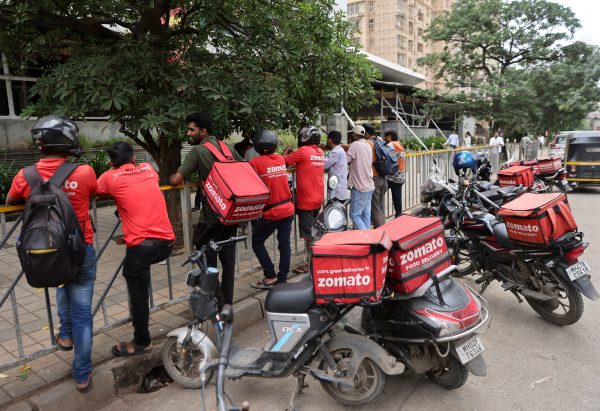The latter group typically already has conventional jobs. The gig work for them is just another option, and their bargaining power is greater as a result. Wages are higher and life is good. But semi-skilled gig workers often find themselves on the wrong side of the aggregators. With unlimited working hours, ever-lowering minimum wage rates, absence of social security payments and arbitrary deletion of workers from the platform, life can be worse.
In July 2021, the Indian Federation of App-based Transport Workers (IFAT) filed a petition before the Supreme Court of India, arguing that aggregators such as Ola, Uber and Zomato violated their rights to equality and freedom, and their right against exploitation, under the Indian Constitution.
IFAT and the Transport Workers’ Federation conducted surveys involving 2128 respondents across six cities, finding the average taxi driver spends between 16 and 20 hours a day in their car and that 89.8 per cent of the respondents say they get less than six hours of sleep. Health issues such as backaches, liver disease, constipation and waist and neck pain were common.
But aggregators do not pay these drivers health and accidental coverage. Worse still, at times the aggregator reduces the minimum wage rates, and there is no added-on benefit to account for higher fuel prices or heavier loads on motorcycles.
This sounds very much like necrocapitalism in action, with Indian aggregators taking full advantage of legal grey areas to exploit wage payments and working hours. Though the experience of gig workers may be different across various states, overall India suffers from high rates of youth unemployment, with aggregators profiting at the expense of the workers.
The most populous country in the world has over 1.4 billion people and an excess supply of working-age individuals with a median age around 28 years. But jobs are hard to come by, and according to the government’s Periodic Labour Force Survey data for 2021 to 2022, the unemployment level remains stagnant at 8.8 per cent and has not changed much since 2017. This is not surprising as many young workers lack technical education and tertiary level certificates — only 1.3 per cent of Indians has a technical education and only 0.7 per cent has a graduate certificate in vocational education.
The alternative is low-paid gig work. An estimated 7.7 million people relied on such jobs as of 2020 and this figure is estimated to increase to 23.5 million by 2030.
The growing number of Indians reliant on the gig economy necessitates government intervention to uphold their labour rights with humane labour practices. The State of Rajasthan showed the way by enacting the Rajasthan Platform Based Gig Workers (Registration and Welfare) Bill, 2023. The law defines aggregators as a ‘digital intermediary… and includes any entity that coordinates with one or more aggregators’.
While this is a step in the right direction, Rajasthan’s intended reform falls short in many ways. First, the definition does not classify the aggregators as employers. Further, the aspect of the law suggesting that gig worker identification numbers will be locked into a platform forever can work against workers who may want to diversify.
The gig worker law contains no language to explain how the division of social security payments will be divided among aggregators for its workers registered on more than one platform and is further complicated by burdens of payment on both state and central governments. Social security payments which are meant for life insurance and accident coverage are already offered through central government schemes. For instance, the Pradhan Mantri Jan Arogya Yojana provides health coverage and Pradhan Mantri Suraksha Bima Yojana provides accidental coverage.
The law is also not clear about how the social security payment will be disbursed on a need-based requirement. A software professional driving for Uber part-time will have a different need in comparison to a full-time Uber driver, making add-ons in social security benefits far less useful for some than for others.
On the contrary, as most of these services are price inelastic, aggregators are going to pass on this element of welfare tax to the consumers in the form of surge pricing and other fees.
The Rajasthan gig-worker law and future legislation can be more effective if they prohibit aggregators from tweaking working hours, minimum wage rates and working conditions. Crucially, gig-worker platforms need to be classified as employers. As written, the law is a small step in the right direction — but more sweeping reform will be necessary as gig work becomes a larger share of the Indian economy.
Nilanjan Banik is Professor of Economics and Finance at the School of Management, Mahindra University.

